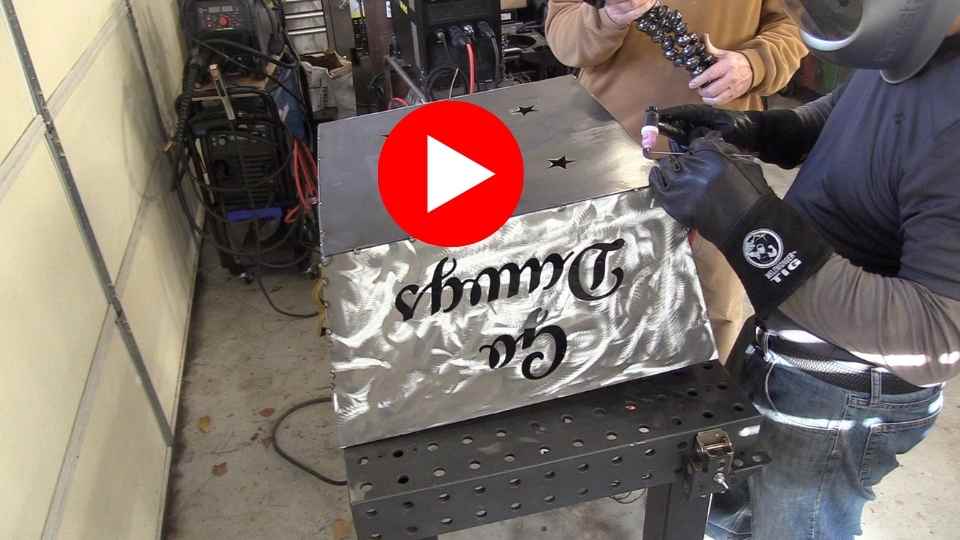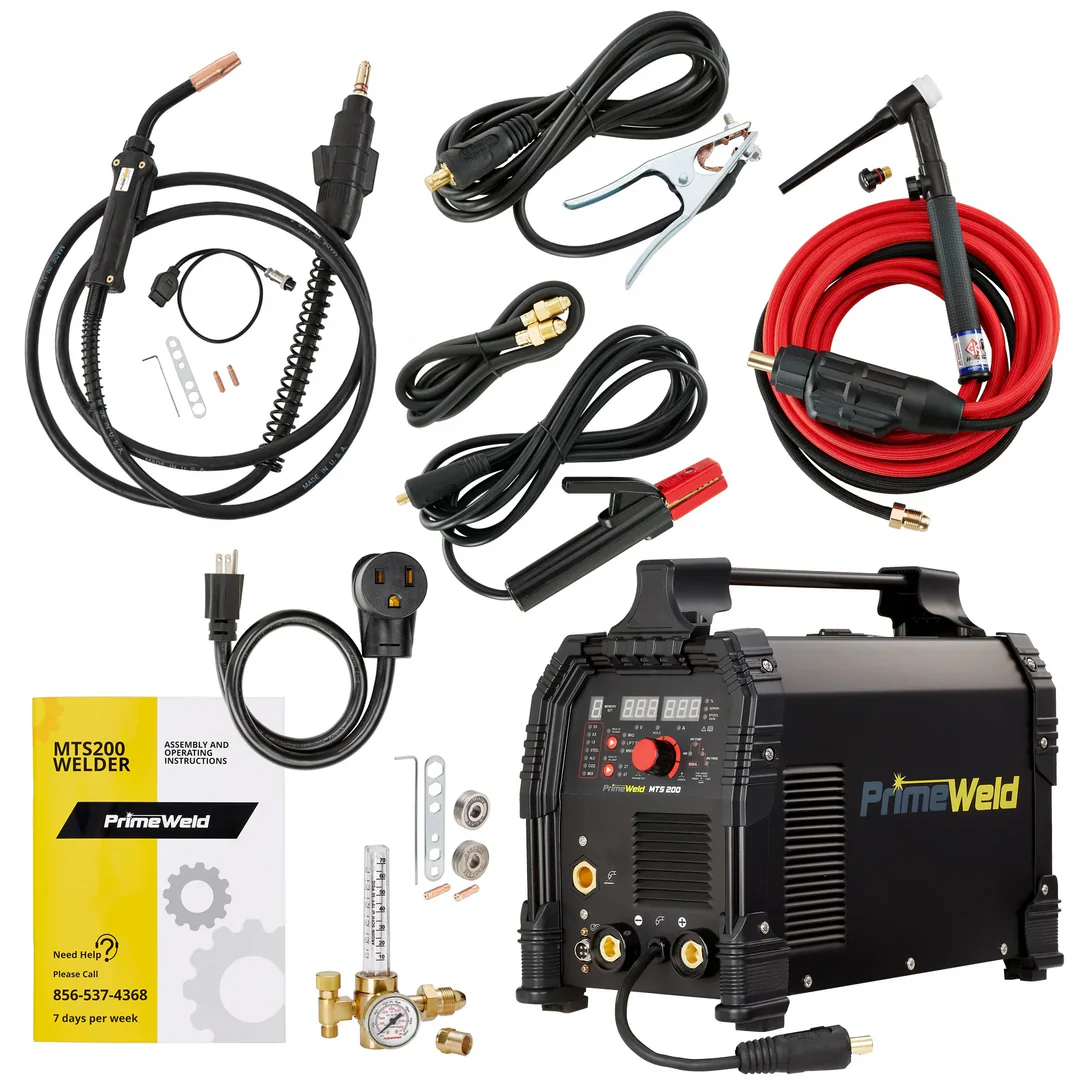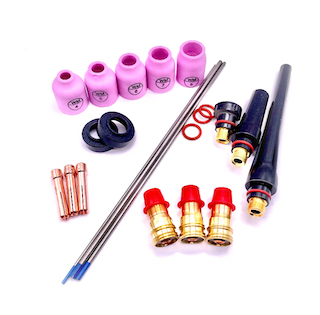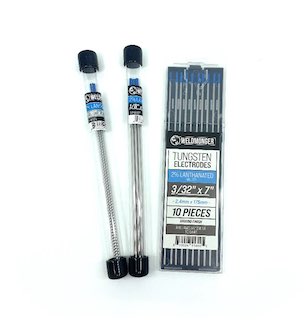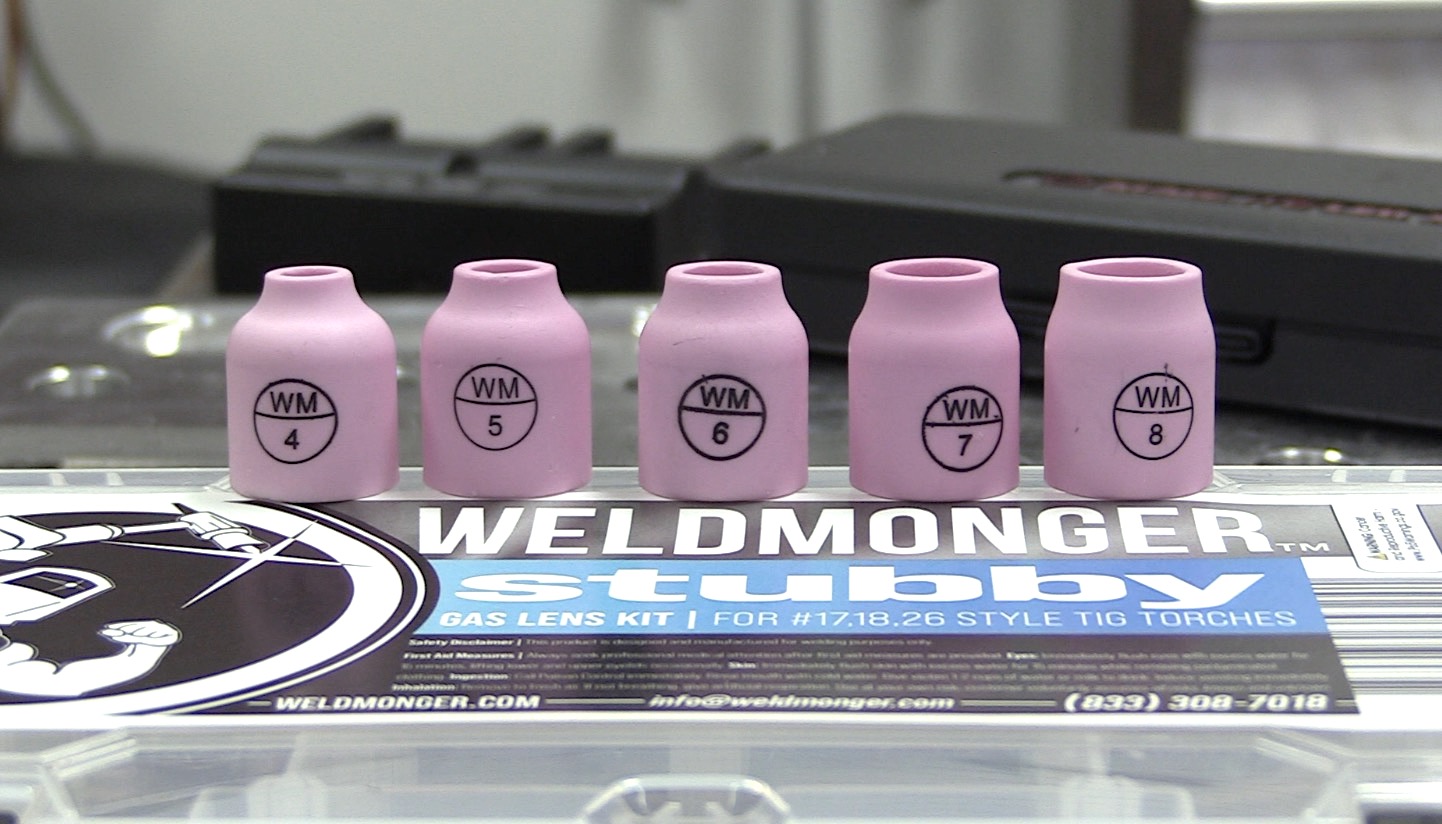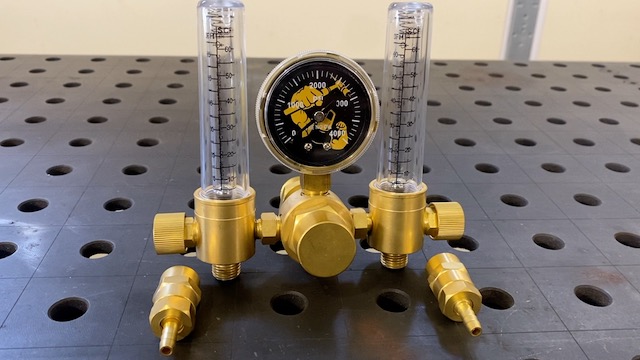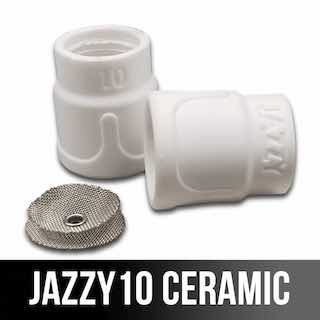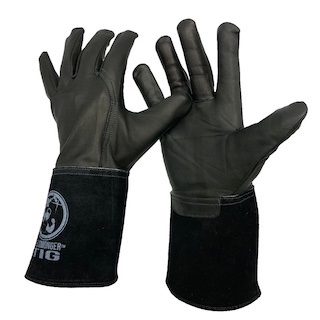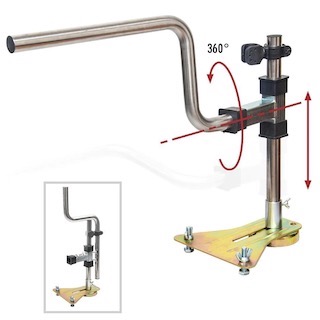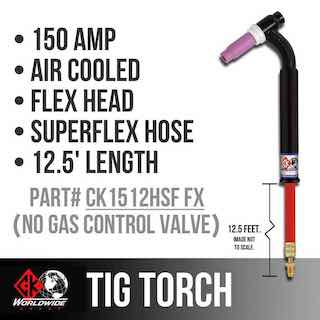Firepit Welding Project - Short Circuit MIG
Scroll Down for Videos
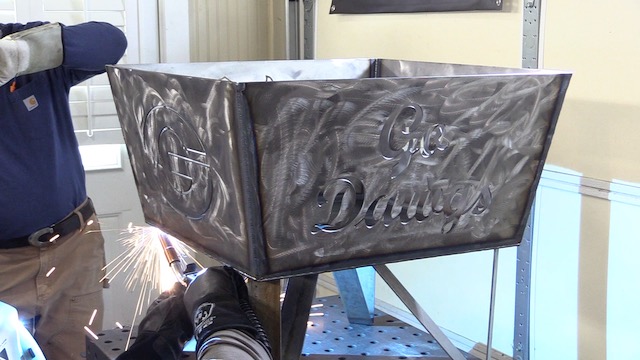
- HOME
- MIG WELDING
- Firepit Welding Project
If you Missed part 1 on TIG welding with a torch switch, click image below
Part 2 MIG Welding the Rest of the Fire Pit with the PrimeWeld MTS200
After TIG welding 4 corner joints using a torch switch on the primeweld tig225x, I decided to weld the remainder of the corner joints with the primeweld MTS200 mig tig stick welder.
The primeweld MTS200 is a mig, tig, stick welder that comes with a CK air cooled tig torch for doing lift arc tig, and a stick stinger for those outside jobs.
Settings for the 11ga outside corners
I have welded this same joint settings as low as 18.1 volts and 150 inches per minute with good results but travel speed is pretty slow using that setting.
Mig settings for a task like this can be very forgiving and lots of different settings would work just fine.
If I wanted to get the fire pit welded a lot faster, I could easily bump up the wire speed to 200 inches per minute or even higher using .035” ER70S-6 wire.
I decided to weld it nice and slow.
Once all the corner joints were welded, the only thing left was to tack and weld the legs.
There are some vent holes cut in the bottom plate that serve as guide marks for the legs and eyeballing the legs was easy.
But just to make sure all the legs touched without teetering, I only made one tack weld on each on the inside area so that I could make any adjustments easily after flipping it over.
The primeweld welding table is a really flat surface and the fire pit didn’t teeter a bit so I went ahead and made the final tack welds in place before flipping it over and welding the legs out.
Why Short Circuit mig welding?
Why Short Circuit MIG Welding is a Good Choice for Welding 11-Gauge Cold Rolled Steel Outside Corner Joints
Short circuit MIG welding—also known as short arc welding—is a smart and highly effective method for welding 11-gauge (approx. 1/8 inch or 3.1mm) cold rolled steel, especially when dealing with outside corner joints.
Why? Because this technique offers the precision, control, and low heat input without distortion or burn-through. Here’s why it works so well for this specific scenario:
1. Low Heat Input Helps Prevents Warping
Cold rolled steel is known for its clean, smooth finish and tight tolerances, but it’s also relatively thin at 11-gauge. This makes it vulnerable to warping or burn-through if excessive heat is applied. Short circuit MIG welding operates at lower voltages and amperages compared to spray or globular transfer methods, which means it introduces less heat into the workpiece. This is exactly what you want when welding thin materials—it keeps everything stable and minimizes heat distortion that could ruin the joint or throw your dimensions off.
2. Excellent for 11ga outside corner joints as well as other fillet welds
Outside corner joints are fun. Short circuit transfer excels in this type of application because it allows for better control over arc placement and puddle size. You get a small, focused arc that lets you fuse the edges cleanly without needing to bevel or add excess filler. This means less grinding, less cleanup, and a smoother finish overall.
3. Clean, Precise Arc for Delicate Work
One of the major advantages of short circuit MIG is its crisp, controllable arc. Each time the wire touches the base metal, it creates a controlled short, melts, and repeats. This short circuiting action makes it easier to manage and control compared to hotter processes. The result is a tighter, cleaner bead that’s easier to direct right into the corner of the joint without overwelding.
4. Minimal Spatter with the Right Settings
When dialed in correctly, short circuit MIG welding can produce very low spatter levels. This is important when working with cold rolled because excessive spatter can mar the surface and be a hassle to clean up, especially on visible components like tanks, furniture frames, or decorative structures. Cold rolled steel’s smooth surface makes it easy for spatter to adhere but with the right settings, spatter can be minimal, and when paired with short circuit MIG and a quality shielding gas (like 75/25 Argon/CO₂), you can achieve great results with minimal post-weld work.
5. Cost-Effective and Easy to Learn
For students, DIYers, or small shops, short circuit MIG is one of the most accessible welding methods. It's easy to learn, doesn’t require exotic equipment, and works well with standard wire and shielding gas setups. This makes it a practical choice for consistently good results on materials like 11-gauge cold rolled steel without the learning curve of TIG or the excessive heat of spray MIG.
Short circuit MIG welding hits the sweet spot for welding 11-gauge cold rolled steel outside corners: low heat, excellent control, clean results, and versatility. Whether you’re fabricating structural pieces, artistic projects, or mechanical enclosures, this method allows you to get strong, professional-looking welds with minimal hassle.


